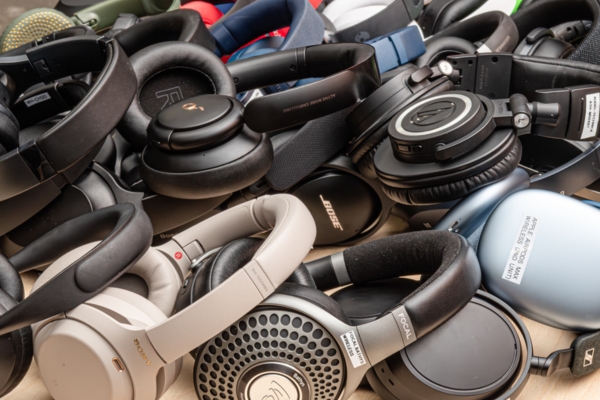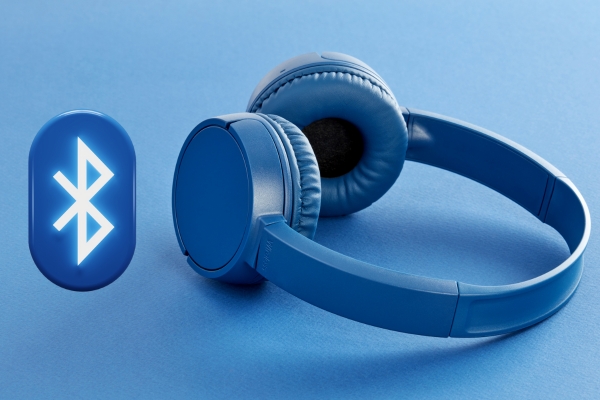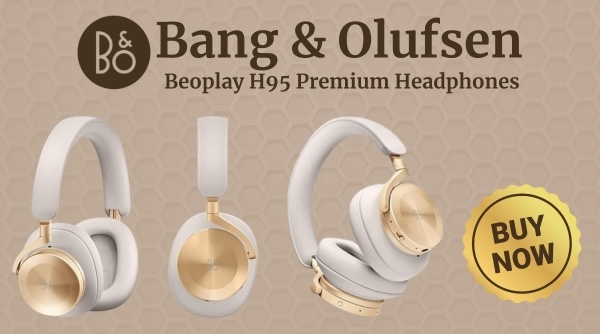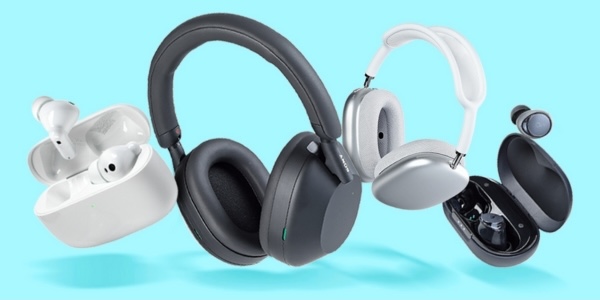Cut the Cord: A Beginner’s Guide to Wireless Headphones
Wired headphones have been a staple for decades, but as technology evolves, more people are making the switch to wireless. Whether you’re tired of untangling cables or looking for more freedom to move, wireless headphones offer a seamless audio experience without the limitations of traditional wired connections.
Thanks to Bluetooth technology, you can now enjoy high-quality sound without being physically tethered to your device. Whether you’re listening to music on a morning run, taking calls hands-free, or immersing yourself in a movie, wireless headphones provide the flexibility and convenience that we’ve never had before.
In this beginner’s guide, we’ll break down how wireless headphones work, their key features, and what to consider when choosing the right pair for your needs. Let’s cut the cord and dive in!
How Do Wireless Headphones Work?
In simple terms, wireless headphones use Bluetooth to receive audio signals from a source—such as your smartphone, laptop, or TV—without the need for physical connections. With a typical range of about 10 meters, depending on the quality of your headphones, you can move freely while staying connected.
Beyond eliminating the hassle of wires, many wireless headphones come equipped with built-in controls, making it easy to adjust volume, switch tracks, or pause playback directly from the headset.
Best of all, modern wireless headphones are designed to deliver impressive sound quality. In many cases it can match or closely rival CD-level audio, ensuring that convenience doesn’t come at the cost of performance.

Benefits of Wireless Headphones
Wireless headphones offer a level of convenience that wired models simply can’t match. Without the hassle of tangled cables, users can enjoy greater freedom of movement, whether they are commuting, working out, or listening to a podcast in bed.
The versatility of wireless headphones is another major advantage, as they can seamlessly connect to multiple devices, including smartphones, tablets, laptops, and even smart TVs. Many models also support multi-device pairing, making it easy to switch between different sources.
Battery life has significantly improved over the years, with many wireless headphones now offering over 20 hours of playback on a single charge. Some over-ear models can last up to 40 hours, while true wireless earbuds often come with a charging case that extends their usage time.
Newer models of wireless headphones also incorporate advanced features such as active noise cancellation (ANC), customizable sound profiles, and integrated voice assistants like Siri or Google Assistant.
Drawbacks of Wireless Headphones to Consider
Despite their many advantages, wireless headphones are not without their drawbacks. One of the biggest concerns is battery dependency. Unlike wired headphones, which function as long as they are plugged in, wireless models need to be charging – regularly. Some models include a backup wired connection, but this feature is not always available.
Another potential downside is audio lag. While modern Bluetooth technology has significantly reduced latency, some wireless headphones still experience a slight delay in sound transmission, which can be frustrating for gamers or those watching videos. This is especially noticeable with older Bluetooth versions or lower-quality audio codecs.

Connection stability is another factor to consider. Although Bluetooth has improved in terms of range and reliability, interference from walls, other wireless devices, or crowded network environments can still cause occasional disruptions. However, models that support Bluetooth 5.0 and above offer better connectivity and improved range.
And of course, there’s the cost. Wireless headphones are generally more expensive than their wired counterparts due to the added Bluetooth components, batteries, and noise-canceling technology.
Bluetooth Versions & Codec Support
The quality of your wireless headphone experience depends significantly on Bluetooth versions and audio codecs. Understanding these factors will help you choose the best headphones for your needs.
Bluetooth Versions: What You Need to Know
Each new version of Bluetooth improves connectivity, range, and power efficiency.
- Bluetooth 4.2 – Older version with a 10-meter range and stable audio transmission.
- Bluetooth 5.0 & 5.1 – Offers better range – especially outdoors, improved stability, and energy efficiency, making it ideal for true wireless earbuds.
- Bluetooth 5.2 & 5.3 – Supports LE Audio (Low Energy Audio), higher-quality audio transmission, and better multi-device pairing.
Audio Codecs: How They Impact Sound Quality
A codec is a software algorithm that compresses and decompresses audio data for transmission. Different Bluetooth codecs affect sound quality, latency, and compatibility:
- SBC (Standard Codec) – The most widely used but lower quality. It’s fine for casual listening but lacks high-fidelity sound.
- AAC (Advanced Audio Codec) – Delivers better sound quality, mainly for Apple users (optimized for iPhones and iPads).
- aptX & aptX HD – Developed by Qualcomm, these codecs offer higher-quality sound with lower latency, ideal for Android users.
- aptX Low Latency (aptX LL) – Best for gaming and video streaming, minimizing audio delay.
- LDAC (Sony Codec) – Supports hi-res audio and transmits more data than other codecs, making it one of the best choices for audiophiles.
Choosing the right codec depends on your device: Apple users benefit most from AAC, while Android users should look for aptX or LDAC support for better sound quality.

Battery Life & Charging Options
As we stated earlier, one of the biggest concerns with wireless headphones is battery life. Fortunately, modern models come with longer-lasting batteries and fast-charging capabilities.
Battery life depends on the type of headphones:
| Type of Wireless Headphones | Average Battery Life | With Charging Case (Earbuds Only) |
|---|---|---|
| True Wireless Earbuds | 5-10 hours | 20-30 hours |
| On-Ear Wireless Headphones | 15-30 hours | N/A |
| Over-Ear Wireless Headphones | 30-50 hours | N/A |
Active Noise Cancellation (ANC) consumes additional processing power, which can significantly reduce battery life. To address this, many brands now include low-power modes that allow users to disable ANC when it’s not needed, helping to extend playback time and optimize energy efficiency.
Some wireless headphones offer quick charge technology, which provides several hours of playback with just a short charge. In the best models you can get a few hours of playtime charge just with 10 minutes of charge time.
For ultimate convenience, certain high-end models support Qi wireless charging, allowing you to charge the headphones or earbuds by placing them on a charging pad. This feature is more common in true wireless earbuds.

Types of Wireless Headphones
Wireless headphones come in different designs, but they generally fall into three categories:
Over-Ear Headphones (Circumaural) – These are the largest type, designed to completely enclose your ears with cushioned ear cups. Over-ear headphones provide superior sound quality, deeper bass, and excellent noise isolation, making them the choice of headphones for audiophiles, professionals, and travelers. Many premium models feature Active Noise Cancellation (ANC) to block out external noise for an immersive listening experience.
On-Ear Headphones (Supra-Aural) – Unlike over-ear models, on-ear headphones rest directly on your ears rather than surrounding them. They are typically lighter and more compact, making them a good option for users who want a balance between portability and sound quality.
In-Ear Headphones (Earbuds) – Compact and highly portable, in-ear headphones fit snugly inside the ear canal, making them ideal for active users, commuters, and casual listeners. They come in two subcategories:
- Wireless Earbuds with a Neckband or Cable – These connect the two earbuds with a thin cable that typically houses playback controls and a microphone. This design reduces the risk of losing an earbud while still offering the convenience of wireless connectivity.
- True Wireless Earbuds – These have no wires at all, with each earbud functioning independently. They rely entirely on Bluetooth for connectivity and come with a charging case for extended battery life.

Key Features to Consider
While all wireless headphones function similarly, some offer additional features that can enhance your experience:
Microphone: Most wireless headphones include a built-in mic for hands-free calls, but it’s worth double-checking if you plan to use them for phone conversations.
Waterproof & Sweat-Resistant: If you need headphones for workouts or outdoor use, look for a model with an IPX rating to withstand moisture.
Noise-Cancelling: This feature actively reduces background noise, making it ideal for focusing, traveling, or enjoying music without distractions.
Voice Assistant Integration: Some wireless headphones work with your smartphone’s voice assistant (e.g., Siri, Google Assistant), allowing you to control functions hands-free.
A Beginner’s Guide to Wireless Headphones
Wireless headphones have revolutionized the way we listen to audio. They offer unmatched convenience, freedom, and advanced features that cater to a wide range of users. Whether you prioritize sound quality, portability, or specialized features like noise cancellation and waterproofing, there’s a wireless headphone model to suit your needs.
No matter your lifestyle, cutting the cord means enjoying music, calls, and entertainment without restrictions. With advancements in Bluetooth technology, battery life, and sound enhancements, wireless headphones are a smart investment for anyone who values convenience and thanks to advancing technologies – excellent quality audio.
Check out more from our Soundrating Blog…
Upgrade Your Setup with These Headphone Stands
What to Look for in a Floor Standing Speaker
Wireless Headphones That Redefine Sound – Expert Reviews & Picks

I am a passionate and skilled car audio enthusiast with 15 years of experience in the industry. My journey started when I replaced my first set of factory car speakers, sparking a deep love for high-quality sound. Since then, I have worked as a representative for renowned brands like Kenwood and Alpine.
With a background in both retail and distribution, I have developed a comprehensive understanding of the car audio market. Currently a certified (MECP) installer in the Mobile Electronics industry, my expertise lies in delivering top-notch audio installations. My knowledge, coupled with my genuine passion, makes me the go-to professional for all car audio needs.
